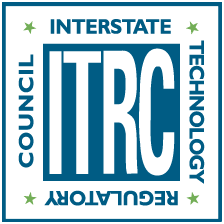Sustainable and Resilient Remediation
Guidance
Voluntary Remediation Program forms and guidance documents in the PDF.
https://www.in.gov/idem/cleanups/2366.htm
Resource
The Voluntary Remediation Program (VRP) encourages environmental cleanups; facilitates the redevelopment, sale, and reuse of commercial and industrial properties; and reduces the risks that contaminants pose to human health and the environment. The VRP provides a process for property owners, operators, potential purchasers, and third parties to voluntarily address (by investigating and, if necessary, remediating) property that is or may be contaminated. Participants are typically current or past property owners, current or past lessees, and prospective purchasers. Local units of government with property obtained by default or with an interest in property development may also participate.
https://www.in.gov/idem/cleanups/2350.htm
The mission of the Indiana Brownfields Program is to encourage and assist investment in the redevelopment of brownfield properties by helping communities via educational, financial, technical and legal assistance to identify and mitigate environmental barriers that impede local economic growth.
Climate
Sharing of ways municipalities can reduce their impact on the environment and improve their community’s quality of life. A listing of ideas to get CLEAN community projects underway.
https://www.in.gov/idem/partnerships/2479.htm
Wildfire
Resource
Indiana Law mandates our fire responsibilities. Indiana Code 14-23-5-1 states that “The department…shall establish and equip a firefighting organization within the Division of Forestry for the purpose of detecting, preventing, fighting and controlling fires on state forest lands.”
https://www.in.gov/dnr/forestry/2852.htm
The 2020 Indiana Forest Action Plan is an update to the 2010 Indiana Statewide Forest Assessment and Indiana Statewide Forest Strategy. The purpose remains unchanged: to address the sustainability of Indiana’s statewide forests and develop a plan to ensure a desired future condition for forests in the state. Further, this updated Forest Action Plan incorporates the Indiana State Wildlife Action Plan, existing Community Wildfire Protection Plans and other statewide and regional planning documents relating to natural resource conservation and management.
https://www.in.gov/dnr/forestry/2852.htm
https://www.in.gov/dnr/forestry/files/fo-ForestActionPlanDRAFT_01_27_2020.pdf


